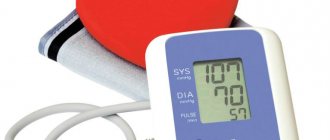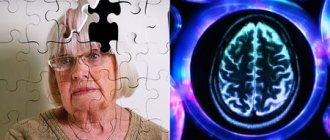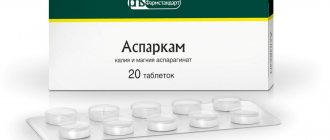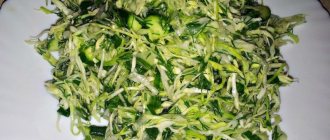Why does it occur
The causes of varicose veins of the rectum are divided into external and internal. They differ in the place of impact and penetration into the body.
External ones include:
- eating disorder;
- sedentary lifestyle;
- excessive alcohol consumption;
- intake of toxic substances;
- some medications;
- parasitic microorganisms;
- stress and smoking.
Lack of nutritional balance leads to digestive problems. The availability of nutrients and oxygen is reduced. The tone of arterial vessels of medium and small caliber is impaired. Due to arterial congestion, venous outflow becomes difficult. In this regard, increased pressure on the walls occurs, their expansion and valve insufficiency.
A sedentary lifestyle disrupts blood flow to the pelvic organs.
It is because of this that there is not sufficient blood flow to the rectum and sigmoid colon. Against this background, hemorrhoids form. Alcoholic drinks destroy the villi of the intestinal tract.
Toxic substances act on the principle of alcoholic beverages. First, they are deposited on the villi, and then destroy them.
Certain medications can both indirectly and directly cause digestive disorders. It also has a detrimental effect on cell function. These medications include most antibiotics and enterosorbents.
The former destroy the microflora and create dysbacteriosis. The second, in addition to toxins, removes all the necessary fluid. It is important to consider the correct dosage.
When drugs are abused, blood flow in the capillaries thickens and blood pressure increases. By following your doctor's recommendations, this can be avoided.
Parasites significantly complicate the work of enterocytes and destroy their membrane. Pathogenic microorganisms include tapeworms, Shigella, Salmonella and St.
An increased level of nicotine in the body has a detrimental effect on the nerve gambia of the spinal cord. This causes dilatation of the intestinal veins and hemorrhoids.
Stress increases the release of catecholamines. They significantly narrow blood vessels, interfering with the outflow of blood circulation.
The formation of hemorrhoids can also occur during pregnancy, after heavy physical exertion and chronic constipation.
Internal causes do not depend on diet and lifestyle. These include genetic abnormalities, congenital pathologies and autoimmune diseases.
Treatment
If you have hemorrhoids, you should consult a doctor rather than carry out therapy yourself. Surgeries for intestinal varicose veins are rarely prescribed - only in cases where necrosis of the intestinal walls has begun or with the final prolapse of hemorrhoidal balls. In other cases, pharmacological agents are used. Remedies for varicose veins are differentiated into groups:
- antiplatelet agents: thin the blood, prevent the formation of blood clots. Indicated, among other things, for varicose veins of the large intestine;
- venotonics containing diosmin and hesperidin: support the functionality of vascular walls.
Also, as additional drugs, drugs are prescribed that improve blood flow inside the capillaries.
How it develops
Venous vessels cover the entire rectum. They consist of a whole network of capillaries and fistulas that communicate with each other through arteries.
These connections are most susceptible to overload. They arise due to various physical factors leading to blood stagnation. With constipation, the walls are compressed by feces and atonicity occurs. Which leads first to stretching, and then to painful dilatation of blood vessels.
As a result, a hemorrhoidal node is formed. Compressing the passage and causing additional difficulty in emptying.
In the subsequent stage, the nodal channel overflows and bursts. This leads to bleeding and anemia. These factors contribute to the development of secondary infection and the development of purulent complications.
Acute vascular disease of the intestine: symptoms and treatment
A dangerous consequence of reduced blood flow to the intestines is tissue necrosis
Poor circulation in any organ leads to progressive ischemia and necrosis.
The gastrointestinal tract is no exception.
Acute vascular disease of the intestine is a collective term that unites a group of pathologies that develop against the background of insufficient supply of oxygen and nutrients to the tissues.
In our review and video in this article, we will consider the causes, mechanism of development, clinical manifestations and principles of treatment of these pathological conditions.
Symptoms
Initial signs are often not given much attention. A person may feel discomfort in the pelvic area for quite a long time. There is also a feeling of a foreign object in the rectum. Depending on the stage of development, itching and pain are added to this.
Symptoms of intestinal varicose veins are divided into hidden and obvious.
- Pain in the abdomen. They can occur suddenly, in any area of the abdominal space. They have a cramping and pulsating character. They appear and pass quickly enough.
- Discomfort during physical activity. During exercise, intra-abdominal pressure increases. This has a detrimental effect on the intestinal serosa. Swelling of the outer shell occurs.
- Bloating occurs when digestion is poor. Pathogenic organisms multiply in the gastrointestinal tract, releasing gases.
- Stool problems. There is both difficulty in emptying and loose stools.
Obvious symptoms include persistent pain and rectal bleeding.
Types of varicose veins
According to the mechanism of occurrence of hemorrhoids, there are two types:
Congenital
It can be hereditary or develop due to a congenital pathology of the structure of hemorrhoidal veins. In an infant, the disease can be activated by constipation - due to an incorrect balance of intestinal microflora, and increased intra-abdominal pressure - due to excessive crying. When a child is born with varicose veins of the small pelvis, treatment must begin from the first days of life and then be regularly monitored by a specialist.
Acquired
Primary hemorrhoids occur as a result of an unhealthy lifestyle over a long period of time - excess of harmful foods, lack of mobility, excess weight, sedentary work.
Secondary acts as a symptom of diseases of other organs - liver cirrhosis, prostate adenoma.
Internal varicose veins
Depending on the location there are:
- External - hemorrhoids protrude outward in the anus, which allows the patient to diagnose it independently. There is a risk of blood clots, anal fissures, and prolonged bleeding.
- Internal - for a long time it is asymptomatic due to the lack of response of the nerve bundles of the mucous membrane to pain. It is impossible to notice varicose veins of the rectum on your own, so at the initial stage the only warning sign may be discomfort during bowel movements.
Stages of development
Primary signs rarely make themselves felt. In total, medicine distinguishes three stages of development.
At first, persistent symptoms of a restless nature appear. The veins protrude slightly.
The second and third involve protruding hemorrhoids during bowel movements. At the initial stages of these stages, the nodes themselves return to their place after defecation. In subsequent development they need to be refilled.
The fourth stage consists of constant prolapse of the intestinal canals, which cannot be filled on their own. Accompanied by acute pain.
Eat right!
Prevention of varicose veins means giving up bad habits and switching to a balanced, healthy diet. For breakfast, you should regularly eat porridge and wholemeal bread. You need to saturate your body with fiber through constant consumption of fruits and vegetables. The list of useful products for the prevention of hemorrhoids looks like this:
- lean chicken fillet or lean veal;
- fruits and berries (bananas, plums, grapes), as well as dried fruits - prunes, dried apricots;
- boiled and raw vegetables;
- soups with low-fat meat or fish broth;
- nuts;
- honey.
As for drinks, it is recommended to drink plenty of magnesium mineral water and fermented milk drinks. It is allowed to drink light wines, cider and weak alcoholic cocktails.
Possible complications
Most patients with hemorrhoids alternate between periods of exacerbation and remission. It is extremely rare that the only symptom is bleeding that recurs at certain points.
Acute complications occur when deviations from the regimen prescribed by the attending physician. In such situations, they develop within twelve hours. Blood loss reaches 100 milliliters of blood per day. The process of defecation is accompanied by both small traces of blood loss and copious streams.
Primary hemorrhages pass without acute pain symptoms.
A number of patients have no pain even in the later stages of hemorrhoids. Even with constant loss of nodular tissue. Internal formations appear faster than external ones. This is due to increased looseness of the submucosal layer, degeneration of the retaining canal and its pathological enlargement.
The size and frequency of prolapse increases as the pathology progresses.
Symptoms
Clinical manifestations of intestinal ischemia are very diverse. In any case, this disease poses a serious danger to the patient and requires emergency medical care.
General signs
Among the general signs characteristic of all forms of acute vascular disease of the intestine are:
- sharp, usually cramping (less often colicky) pain in the abdomen. It lasts more than 2 hours and does not go away after taking standard analgesics;
- bloating;
- loose stools;
- bleeding from intestinal vessels, blood in the stool (approximately 25% of patients);
- signs of OKN:
- nausea, vomiting;
- pronounced intoxication syndrome.
With ischemia of the arteries of the lower gastrointestinal tract, functional intestinal obstruction develops
Important! Until severe complications develop (peritonitis, intestinal perforation), symptoms of peritoneal irritation are not detected in patients.
The clinical course of the disease is divided into several stages:
- Hyperactive. It is characterized by the appearance of the first symptoms of the pathology - severe abdominal pain and blood in the stool. With timely initiation of therapy, it is reversible and does not lead to the development of complications.
- Paralytic. Accompanied by the spread of pain, weakening of intestinal motility, and cessation of stool. Often complicated by peritonitis, intestinal perforation. The Shchetkin-Blumberg symptom becomes positive.
- Shock is the terminal stage, which results from loss of fluid from the intestinal wall that has undergone perforation. It manifests itself as a sharp drop in blood pressure, tachycardia, decreased frequency of urination, and progressive depression of consciousness.
Important! In the stage of irreversible intestinal necrosis, pain usually decreases, which is mistakenly perceived by the patient as an improvement in the condition.
Mesenteric artery embolism
Since embolism always develops acutely, this form of vascular disorders is always accompanied by a sudden violent onset. The first symptom is usually severe nausea and vomiting, which brings virtually no relief to the patient.
This form of pathology is accompanied by severe abdominal pain.
Embolism of the mesenteric arteries can also be suspected based on the “cardiac” nature of the disease - a history indicating:
- concomitant atrial fibrillation;
- recent myocardial infarction;
- previously diagnosed heart defects.
Thrombosis of the mesenteric artery
This form often develops against the background of existing atherosclerosis. According to statistics, about half of patients with a history of thrombosis indicate regularly recurring attacks of abdominal angina (chronic abdominal pain that worsens after eating).
The disease is characterized by a less acute course of ischemia: its symptoms develop slowly and are not so pronounced.
In atherosclerosis, ischemia can be compensated for a long time
Non-occlusive ischemia of mesenteric vessels
Usually occurs in elderly patients. The pathology develops slowly, over several days. Its clinical manifestations remain vague and nonspecific.
There may be complaints about:
- mild dull pain in the abdomen;
- vomiting;
- decreased blood pressure and tachycardia;
- change in stool color.
Signs of non-occlusive ischemia can mimic many other diseases
Diagnostic methods
Diagnosis of varicose veins in the intestine is carried out by external examination and using special equipment.
The doctor conducts the initial examination on a gynecological chair. This usually occurs in the position of knees drawn up to the chest or in a knee-elbow position.
Initially, attention is paid to the condition of the anus and the presence of skin defects. Next comes the assessment of the anal passage for the formation of polyps, nodes and scars by palpation.
Using an anoscope, a specialist assesses the condition of the mucous membrane at a depth of twelve centimeters.
After this, the doctor prescribes one of several types of diagnostics.
- Colonoscopy is performed using a thin and long probe with a camera at the end. The fiber colonoscope is gradually inserted into the hole along with the air supply. The image transmitted to the screen displays data on the condition of the walls of the organ being examined.
- Sigmoidoscopy involves the injection of a contrast agent. It highlights areas with ulcers, inflammation and tumors.
- Sigmoidoscopy allows you to examine the passage in detail at a distance of up to 25 centimeters.
Laboratory tests are also collected.
Preventive measures
The best method of prevention is maintaining a healthy lifestyle.
It is necessary to completely abandon harmful habits in the form of alcohol and cigarettes. Increase physical activity; walking for an hour every day will be enough. Maintain proper nutrition, avoid any fatty and unhealthy foods.
These simple methods will help prevent congestion in the pelvic organs. And also minimize the possibility of irreversible changes in the body.
Measures to prevent the disease
It is almost impossible to cure pelvic varicose veins without surgical intervention, and even the operation itself does not guarantee that the disease will not occur in the future.
To prevent the disease, it is very important to follow the recommendations of doctors and lead the healthiest lifestyle possible:
- stop smoking and try not to abuse alcohol;
- use hormonal drugs only as prescribed by a doctor, observing all precautions and strictly following the course of treatment;
- lead an active lifestyle (this means more movement and less sitting still, especially sedentary);
- it is very important to follow an anti-sclerotic diet, eat large amounts of fresh plant foods (vegetables, fruits, herbs);
- strictly perform therapeutic gymnastic exercises and breathing techniques, which are prescribed by the doctor after examination and diagnosis;
- Responsibly use venotonic drugs prescribed by a specialist.
Varicose veins can be difficult to detect. You should not sit at home, hoping for a miraculous healing, but go to the hospital to prevent the disease. Strictly following the procedures prescribed by the doctor and taking medications can help, but in order to get help, you need to show a desire to get it.











